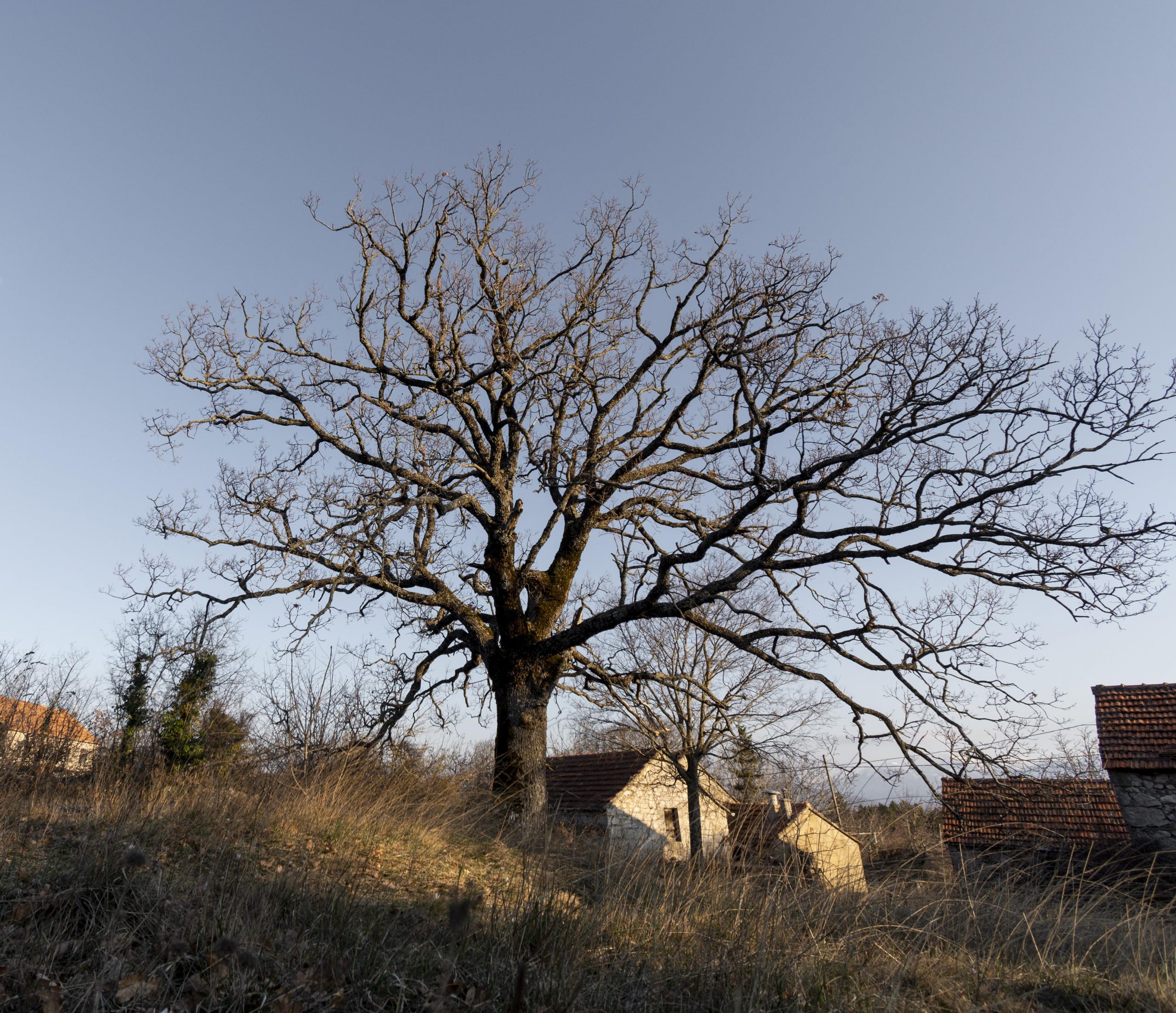PROTECTING YOUR TREES FROM INSECTS AND PESTS
PROTECTING YOUR TREES FROM INSECTS AND PESTS
Protecting trees from insects and pests is crucial for ensuring their overall health, longevity, and the vitality of the entire ecosystem they support. Trees are not only valuable aesthetically but also ecologically, providing numerous benefits to both humans and the environment. When trees are affected by insects and pests, it can have far-reaching consequences that extend beyond the individual tree. Here’s why protecting trees from insects and pests is of paramount importance:

- Tree Health and Vigor:
- Insects and pests can weaken a tree’s immune system and stress its physiological functions. This compromises the tree’s ability to grow, produce leaves, and develop strong branches, making it susceptible to other diseases and environmental stresses.
- Longevity and Lifespan:
- Healthy trees live longer. When trees are consistently stressed or weakened by pests, their overall lifespan is shortened. Protecting trees from infestations can extend their years of service and the benefits they provide.
- Ecosystem Support:
- Trees play a vital role in supporting ecosystems by providing habitat, food, and shelter for numerous wildlife species. When trees are healthy, they contribute to a diverse and thriving ecosystem.
- Air and Water Quality:
- Healthy trees absorb pollutants from the air and improve air quality by releasing oxygen. They also act as natural filters, helping to improve water quality by reducing runoff and soil erosion.
- Aesthetic Value:
- Trees contribute to the beauty and aesthetics of landscapes, neighborhoods, and urban areas. Pest-damaged trees detract from the visual appeal of surroundings and can negatively impact property values.
- Climate Resilience:
- Trees contribute to climate resilience by sequestering carbon dioxide and helping to mitigate the effects of climate change. Pests can compromise a tree’s ability to store carbon and adapt to changing environmental conditions.
- Shade and Energy Savings:
- Healthy trees provide valuable shade that helps reduce temperatures and energy costs during hot months. Pest-infested trees can lose their canopy, decreasing their ability to provide effective shade.
- Economic Impact:
- Pest-infested trees can result in increased maintenance costs, removal expenses, and lost revenue due to decreased property value and attractiveness.
- Biodiversity Preservation: – Healthy trees support biodiversity by providing habitat and resources for various species. Pest infestations can disrupt these ecosystems and lead to a decline in local biodiversity.
- Ecological Balance: – Trees are part of a complex web of interactions in ecosystems. When trees are affected by pests, it can disrupt these interactions and upset the ecological balance of an area.
- Cultural and Historical Significance: – Some trees hold cultural, historical, or sentimental value. Protecting these trees from pests helps preserve a connection to heritage and the stories associated with them.
In conclusion, the importance of protecting trees from insects and pests goes beyond the individual tree’s health. It encompasses the well-being of the environment, wildlife, air quality, aesthetics, and the overall quality of life. By taking measures to prevent and manage pest infestations, property owners contribute to the longevity and resilience of trees, ensuring that their benefits are enjoyed by current and future generations.
Common Tree Pests
Several common types of insects and pests can damage trees, compromising their health and overall well-being. These pests can vary depending on the tree species, location, and environmental conditions. Here are some of the most prevalent types of tree-damaging insects and pests, along with explanations of their impact:

**1. Bark Beetles: Bark beetles are small insects that burrow into the bark of trees, creating tunnels and galleries. They can introduce fungal pathogens that weaken the tree’s vascular system, leading to tree decline and mortality. Common species include mountain pine beetle and emerald ash borer.
**2. Aphids: Aphids are small, soft-bodied insects that feed on tree sap by piercing the leaves and stems with their mouthparts. They excrete a sugary substance called honeydew, which can attract sooty mold and interfere with photosynthesis. Aphid infestations can cause stunted growth and leaf curling.
**3. Scale Insects: Scale insects are immobile pests that attach themselves to tree branches and leaves, sucking out plant fluids. They create a protective covering that resembles scales or shells. Severe scale infestations can weaken trees, cause leaf yellowing, and reduce overall vitality.
**4. Caterpillars: Caterpillars, the larval stage of butterflies and moths, can defoliate trees by consuming leaves. Gypsy moths and tent caterpillars are examples of species known for causing significant defoliation, which can stress trees and hinder their growth.
**5. Whiteflies: Whiteflies are tiny insects that cluster on the undersides of leaves. They feed on plant sap and excrete honeydew, leading to sooty mold growth. Whiteflies weaken trees and can transmit plant viruses, causing leaf yellowing and premature leaf drop.
**6. Leaf Miners: Leaf miners are larvae of various insect species that tunnel through leaves, leaving distinctive patterns or trails. Their feeding disrupts leaf function, reduces photosynthesis, and weakens the overall health of the tree.
**7. Fungus and Pathogens: While not insects, fungal pathogens can severely damage trees. Examples include Dutch elm disease, which affects elm trees, and oak wilt, which affects oak trees. These diseases can lead to wilting, leaf loss, and even tree death.
**8. Emerald Ash Borer: This invasive beetle species targets ash trees and can cause significant damage by tunneling beneath the bark, disrupting the tree’s nutrient and water transport systems. Infested trees display canopy dieback and increased susceptibility to other stressors.
**9. Bagworms: Bagworms are caterpillar larvae that build protective cases made of silk and plant material. They attach these cases to tree branches and feed on leaves. Severe infestations can defoliate trees and weaken their structure.
**10. Spider Mites: Spider mites are tiny arachnids that feed on the sap of trees, causing stippled or discolored leaves and webbing. They thrive in hot and dry conditions and can rapidly multiply, leading to reduced tree health.
**11. Japanese Beetles: These beetles feed on the foliage of various tree species, skeletonizing leaves and causing severe defoliation. They are particularly damaging in large numbers and can lead to stress and decline in affected trees.
It’s important to identify these pests early and take appropriate action to manage their populations. Integrated pest management (IPM) strategies, which combine various approaches including cultural practices, natural predators, and targeted chemical treatments, can help mitigate the damage caused by these pests and maintain the health of your trees.
Signs of Infestation
Recognizing the signs of pest infestation in trees is crucial for early intervention and effective pest management. Detecting infestations early allows you to take appropriate measures to prevent further damage and preserve the health of your trees. Here are common signs to watch for:

- Leaf Damage:
- Chewed, Riddled, or Skeletonized Leaves: Damage to leaves can indicate the presence of chewing insects like caterpillars or beetles that feed on foliage.
- Discolored or Wilted Foliage:
- Yellowing or Browning Leaves: Pests that sap nutrients or water from leaves can cause discoloration and wilting as the tree struggles to maintain its health.
- Abnormal Leaf Growth:
- Leaf Curling or Distortion: Aphids and certain other pests can cause leaves to curl or become distorted due to their feeding behavior.
- Presence of Pests:
- Visible Insects: Some pests, like aphids or caterpillars, may be visible on leaves or branches. Look for clusters, trails, or webs that indicate insect activity.
- Sooty Mold:
- Black or Dark Coating on Leaves: Honeydew excreted by insects like aphids can lead to the growth of sooty mold, giving leaves a dark, dirty appearance.
- Sawdust or Frass:
- Piles of Sawdust or Insect Droppings: Presence of sawdust (frass) near the base of the tree can indicate infestation by borers or other wood-boring insects.
- Blisters or Galls:
- Unusual Growths on Leaves or Stems: Galls or blisters formed by insect activity can be a sign of infestation, such as from gall wasps or mites.
- Weakened Canopy:
- Thinning Canopy or Dieback: If sections of the canopy appear sparse, thin, or dead, it might be due to pests affecting the tree’s ability to produce healthy foliage.
- Visible Damage on Bark: – Bark Splitting or Cracking: Bark beetles and other pests may create small entry points or tunnels in the bark, leading to visible damage.
- Drooping Branches: – Sagging or Drooping Branches: Branches that appear to be hanging down or sagging could indicate pest activity affecting the branch’s health.
- Early Leaf Drop: – Premature Leaf Drop: If leaves are falling off earlier than usual, it might be due to pest damage or disease affecting the leaves’ longevity.
- Presence of Webbing: – Silken Webbing: Spider mites, bagworms, and other pests might leave silken webs on leaves, branches, or the trunk.
- Unusual Insect Activity: – Unusual Insect Behavior: If you observe swarming insects, excessive flying or crawling, it might indicate an outbreak that requires attention.
- Decline in Overall Health: – General Tree Decline: Trees that show overall decline in growth, vigor, or appearance could be suffering from a chronic pest infestation.
Regularly inspecting your trees for these signs can help you catch pest infestations early, making it easier to address the issue and minimize potential damage. If you’re uncertain about the cause of any observed changes in your trees, consulting with an arborist or tree care professional can provide valuable insights and recommendations for treatment.
About Murray, Utah
Murray is a city situated on the Wasatch Front in the core of Salt Lake Valley in the U.S. state of Utah. Named for territorial governor Eli Murray, it is the state's fourteenth largest city. According to the 2020 census, Murray had a population of 50,637. Murray shares borders with Taylorsville, Holladay, South Salt Lake and West Jordan, Utah. Once teeming with heavy industry, Murray's industrial sector now has little trace and has been replaced by major mercantile sectors. Known for its central location in Salt Lake County, Murray has been called the Hub of Salt Lake County. Unlike most of its neighboring communities, Murray operates its own police, fire, power, water, library, and parks and recreation departments and has its own school district. While maintaining many of its own services, Murray has one of the lowest city tax rates in the state.
Neighborhoods in Murray, Utah
Murray Oakes, Grant Park, Southwood Park, Murray Park, Murray Park Restrooms, Willow Pond Park, Neighborhood Veterinary Care
Things To Do in Murray, Utah
Bus Stops in Murray, Utah to Truco Services, Inc.
Bus Stop in Murray Central Station (Bay C) Murray, Utah to Truco Services, Inc.
Bus Stop in State St @ 4801 S Murray, Utah to Truco Services, Inc.
Bus Stop in Murray North Station Murray, Utah to Truco Services, Inc.
Bus Stop in State St @ 4949 S Murray, Utah to Truco Services, Inc.
Bus Stop in Murray Central Frontrunner/Trax Station Murray, Utah to Truco Services, Inc.
Bus Stop in Murray Blvd / Vine St (SB) Murray, Utah to Truco Services, Inc.
Bus Stop in State St @ 3925 S Murray, Utah to Truco Services, Inc.
Bus Stop in State St @ 4824 S Murray, Utah to Truco Services, Inc.
Bus Stop in State St @ 5223 S Murray, Utah to Truco Services, Inc.
Bus Stop in Murray Blvd / Allendale Dr (NB) Murray, Utah to Truco Services, Inc.
Bus Stop in Murray Blvd @ 5039 S Murray, Utah to Truco Services, Inc.
Bus Stop in State St @ 4721 S Murray, Utah to Truco Services, Inc.
Driving Directions in Murray, Utah to Truco Services, Inc.
Driving Directions from Woodruff Tree Trimming and Removal to 4640 Commerce Dr, Murray, UT 84107, USA
Driving Directions from Reliable Tree Care to 4640 Commerce Dr, Murray, UT 84107, USA
Driving Directions from Tree Pro-Tech to 4640 Commerce Dr, Murray, UT 84107, USA
Driving Directions from Prestige Tree And Landscape to 4640 Commerce Dr, Murray, UT 84107, USA
Driving Directions from Excellence Tree & Landscape to 4640 Commerce Dr, Murray, UT 84107, USA
Driving Directions from Amen Trees to 4640 Commerce Dr, Murray, UT 84107, USA
Driving Directions from Tim's Tree Care to 4640 Commerce Dr, Murray, UT 84107, USA
Driving Directions from Jordan Tree Service - Murray to 4640 Commerce Dr, Murray, UT 84107, USA
Driving Directions from Arbor Works to 4640 Commerce Dr, Murray, UT 84107, USA
Driving Directions from Diamond Tree Experts to 4640 Commerce Dr, Murray, UT 84107, USA
Driving Directions from Green Tree Arborist to 4640 Commerce Dr, Murray, UT 84107, USA
Driving Directions from TruCo Services to 4640 Commerce Dr, Murray, UT 84107, USA
Reviews for Truco Services, Inc. Murray, Utah
Emily Abercrombie
We had a great experience with TruCo! They were well priced, responsive and prompt. Michael was a pleasure to work with and gave us advice on which plants to put in where we took out our ugly old shrubs. I would highly recommend this company!!!
Michelle Turpin
TruCo Services gets 5 stars from us for customer service. We experienced a few issues with their services this last year and Rob Eccles in senior management, stepped in and immediately handled our issues. He was very committed to making sure they understood our expectations and would execute to make us happy.
Siobhan Billingsley
I work for a property management company and have the pleasure of working with Rob at a community in Sandy. He has been incredible to work with and always responds in a timely manner. He knows all the homeowners by name and address and is aware of all the "problem" areas when it comes to sprinklers. I never have to worry about following up with him because he always reaches out to provide me with an update. If you're looking to work with someone who takes pride in their job, is professional, and can solve the worst landscaping problems thrown your way, Rob is your guy. Thank you, Rob for all you do!
Jaime S.
We have used Truco at 2 of the complexes we manage, they have been great to work with. Good quality service, outstanding customer service with good communication. That's hard to find these days. I highly recommend them. Travis has been awesome to work with.
Jerusha Smart
We use TruCo for a majority of our properties and our home. While other landscaping companies we use come and go for various reasons like cost, communication issues, work performance, etc., TruCo is always consistent in price and work. Also, Rob is the best.

